*Please prepare a license ID and password for the license administrator.
*It is different from the service for JMAG WEB MEMBER (free membership). Please be careful.
Overview
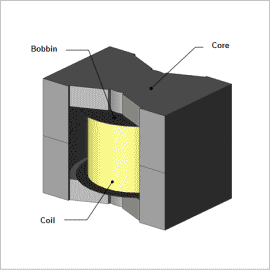
A choke coil is an electric component that is intended to filter high-frequency current. Measures to evaluate the heat source as well as the core iron losses that occur within the choke coil and the copper losses of the coil that decrease efficiency need to be used for this analysis.
The current generated in the choke coil has offsets caused by the skin effect, proximity effect, and leakage flux near the gap, so it is distributed both inside of and between the wires. Iron loss generated in the core is also distributed by offsets in the core’s magnetic flux density. It is helpful to get tips for the design quantitatively and visually studying these detailed distributions, and an effective way of doing this is a magnetic field analysis that uses the finite element method (FEM).
This Application Note shows how to obtain the iron loss and copper loss in a choke coil.
The current generated in the choke coil has offsets caused by the skin effect, proximity effect, and leakage flux near the gap, so it is distributed both inside of and between the wires. Iron loss generated in the core is also distributed by offsets in the core’s magnetic flux density. It is helpful to get tips for the design quantitatively and visually studying these detailed distributions, and an effective way of doing this is a magnetic field analysis that uses the finite element method (FEM).
This Application Note shows how to obtain the iron loss and copper loss in a choke coil.
Iron Loss Density Distribution
The iron loss density distribution is shown in fig. 1, the joule loss density distribution in fig. 2, and the hysteresis loss density distribution in fig. 3.
From fig. 1, it is apparent that iron losses increase in the inside corners. This is caused by the flow of magnet flux concentrating on the shortest path through the magnetic circuit. The hysteresis losses are the largest contributor to the iron losses, as indicated in figures 2 and 3.
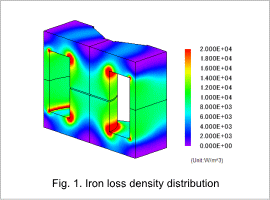
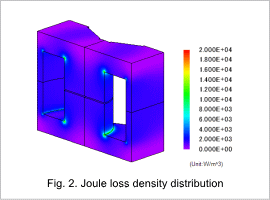
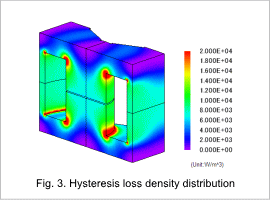
Copper Loss Density Distribution
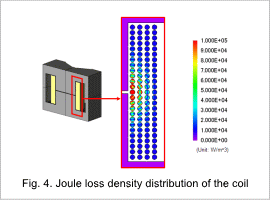
Fig. 4 shows the joule loss density distribution in the coil. The joule losses are larger around the gap, as indicated in this figure. These joule losses are produced by the leakage flux from the gap that causes the current distribution in the wires to be uneven.
Percentage of Loss
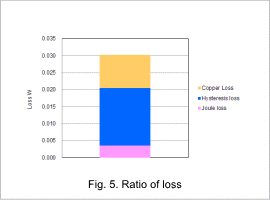
The percentage of the iron and copper losses is indicated in fig. 5. As the table indicates, the hysteresis losses dominate the losses of the choke coil. However, when looking at the loss densities it becomes apparent that there is a region near the coil where they are high. In a heating design it is possible to resolve this issue and lower the heat generation density in the coil by changing the gap width or the coil arrangement.


